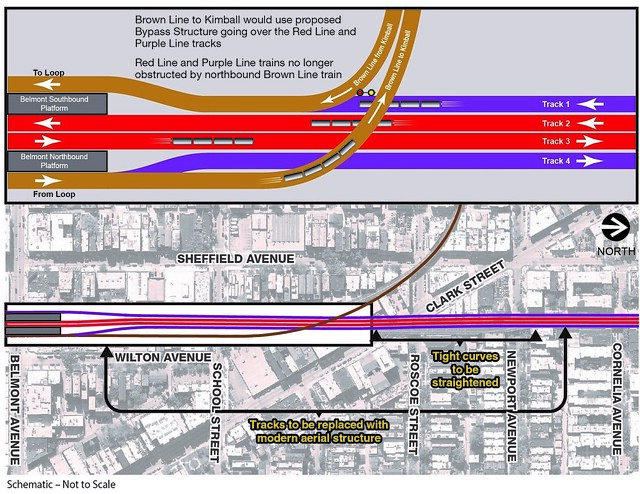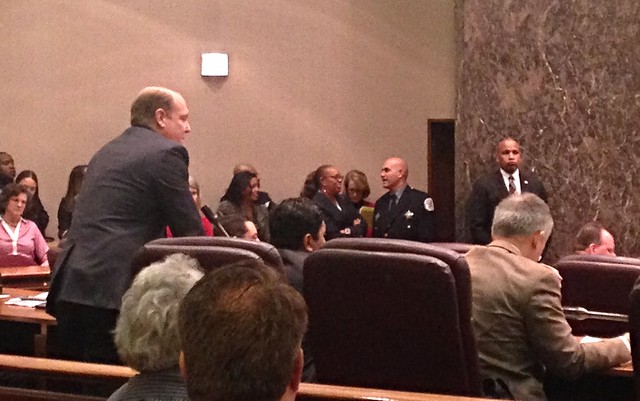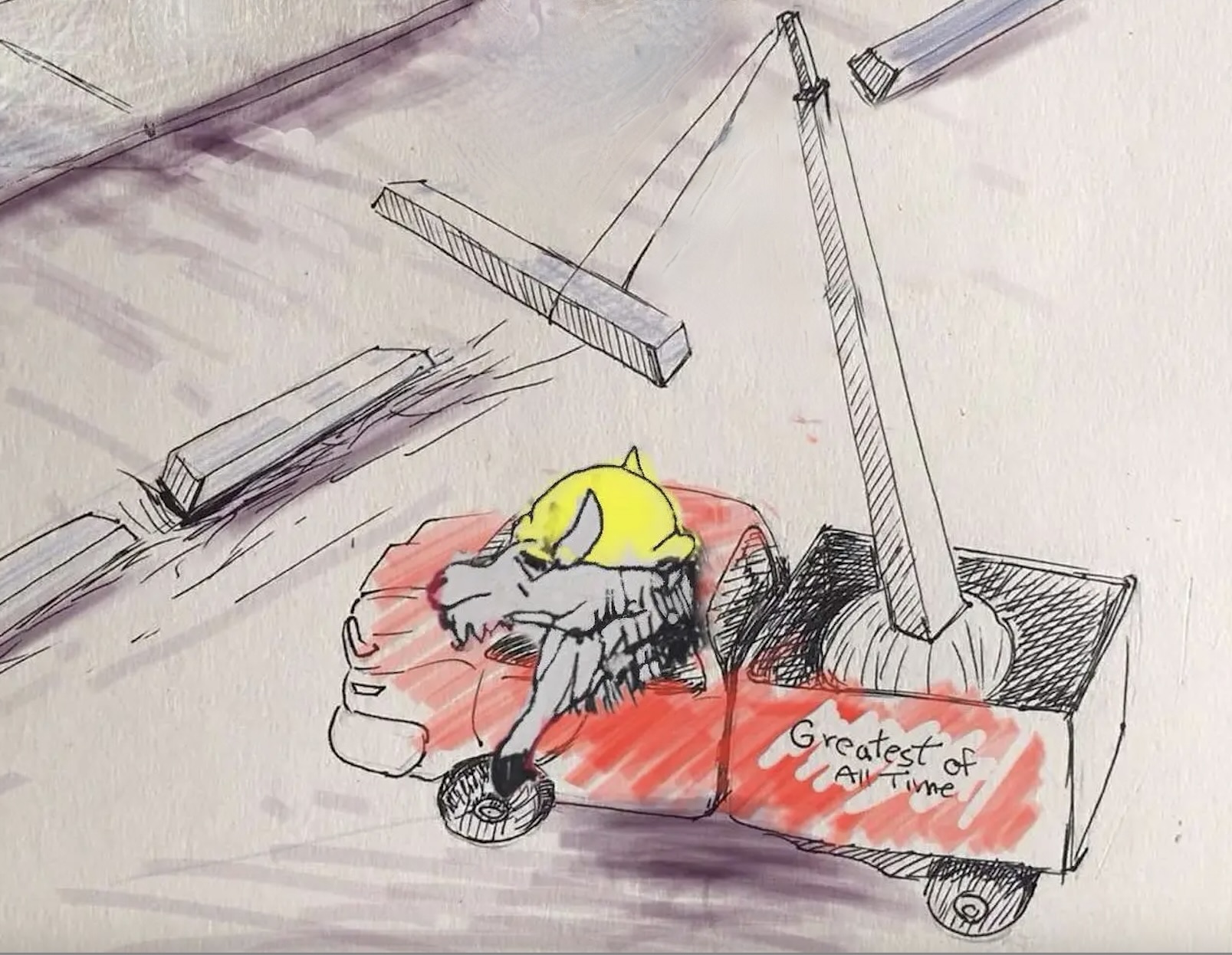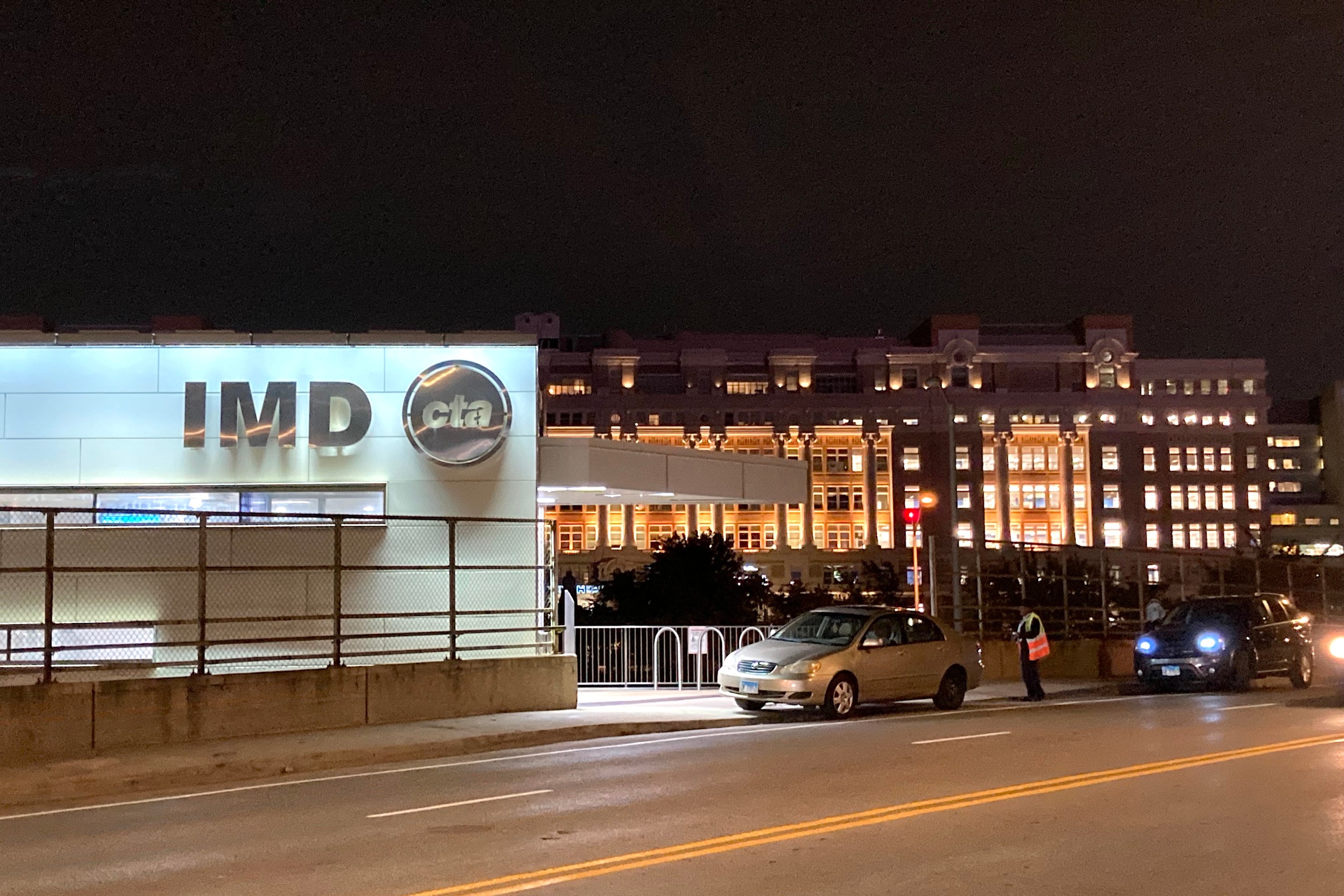TIF Passed, Making It Likely RPM Will Be Funded Before Trump Takes Over
1:24 PM CST on November 30, 2016
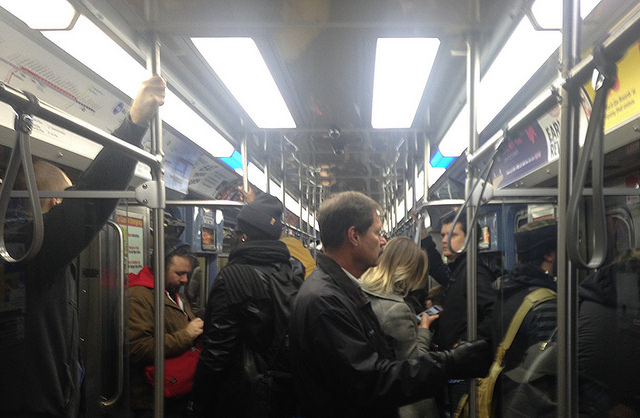
A Red Line train this morning. The CTA says the RPM project will allow them to run 15 more trains an hour during peak periods. Photo: John Greenfield
Chicago straphangers can breath a sigh of relief. This morning aldermen voted 46-0 to pass the tax-increment financing district that will help fund the $2.3 billion Red and Purple Modernization project, which will provide critical capacity and speed improvements.
Today is the deadline for the CTA to apply for the $1.1 billion federal Core Capacity grant that will cover the first phase of construction, but Chicago needed to line up a local match in order to win the grant. The TIF will be used to pay back a $622 million federal loan that, along with $468 the transit agency plans to borrow, will be used for the matching funds. Since the feds are expected to approve the Core Capacity grant by January 15, the Council’s decision means that RPM will be probably funded be funded before the Republicans, whose platform called for eliminating federal transit funding, take over.
RPM would rebuild the Red and Purple Line tracks from Lawrence to Howard, upgrade signals, reconstruct four station and create a flyover just north of the Belmont stop to eliminate conflicts between Red, Purple, and, Brown Line trains. The CTA says the latter feature will allow them to run 15 more trains an hour between Belmont and Fullerton during rush periods, which will be crucial for addressing overcrowding on the at-capacity Red Line as the North Side’s population grows.
Before the vote, 14th ward alderman Ed Burke, a Southwest Side politician who’s chair of the finance committee, argued that the TIF was necessary because crowding on the Red Line “has frustrated and inconvenienced thousands of members of the riding public,” adding that the line is "an invaluable economic engine that benefits the entire city.” He also noted that only five of the 14 stations between Belmont and Howard are wheelchair accessible, a problem that rebuilding the Lawrence, Argyle, Berwyn, and Bryn Mawr stops will help address.
Burke added the RPM project is expected to create 5,700 new construction jobs, and promised there will be a strong workforce diversity outreach program to ensure that a fair number of positions go to people of color and women. “The future of Chicago public transit may well rest on the decision made in the Council today,” he said.
48th Ward alderman Harry Osterman, whose district includes Edgewater, where two of the station reconstructions will occur, noted that slow zones on the North Red Line affect transit downtown and on the South Side as well. He added that, unlike traditional tax-increment financing districts, the transit TIF won’t divert money from the schools.
Osterman noted that creating more capacity on the Red Line will help get cars off of roads like Lake Shore Drive. “But if we don’t act now, the federal money is not going to be there,” he warned.
Alderman James Cappleman of the 46th Ward in Uptown argued that rehabbing the transit corridor will provide a strong economic boost to the surrounding areas. He credited the in-progress $203 million rehab of the Wilson station with helping to spur the opening of 18 new businesses nearby. Cappleman added that good transit service will become more important for keeping Chicago competititive in the future. “We know that more and more millennials are not buying cars,” he noted.
36th Ward alderman Gilbert Villegas, a former Illinois Department of Transportation deputy director whose district includes Montclare, stressed the importance of making sure people of color and women are “at the table” for getting contracts and jobs associated with the project. He said he’d be working with the CTA to develop an on-the-job training program.
44th Ward alderman Tom Tunney, whose territory includes Lakeview, said RPM is “obviously an amazing infrastructure program.” But he said he’s still concerned about the longterm impact of the planned demolition of some 16 properties in the neighborhood to make room for the Belmont flyover. He noted that properties along Wilton Avenue were demolished several years ago as part of the Brown Line renovation project that included expanding the Belmont station, and the CTA still hasn’t done anything with the vacant land.
“The CTA has not been a good steward of that land,” he said. He noted that neighbors across the street from the Belmont stop now have a view of a gravel parking lot, which makes it harder to sell their homes. He said it will crucial for the transit agency to create a redevelopment plan for the properties affected by RPM, to ensure that “this will not be a scar, this will be a catalyst.”
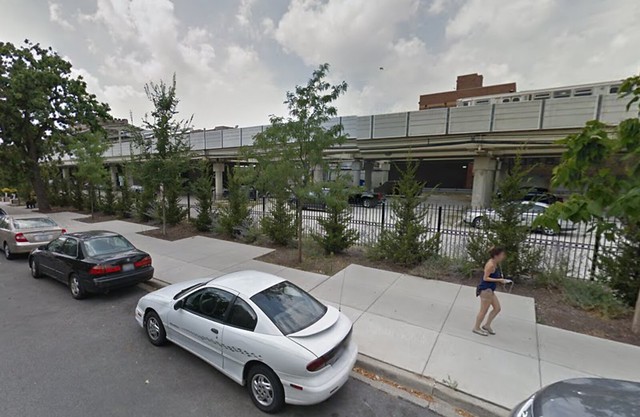
37th Ward alderman Emma Mitts, whose district includes parts of Garfield Park and Austin, said she has been too busy dealing with gun violence in the ward to examine the transit TIF ordinances. She said that safety concerns in her area affect residents’ transportation choices. “I’m looking at [the Green Line station at] Laramie and Lake, and I wouldn't catch the ‘L’ there either.”
Calling her time at the microphone “an opportunity to vent,” she noted that all of her City Council colleagues have a responsibility to address the violence problem in her ward and other affected communities. “I thought about saying ‘to heck with [the transit TIF],’ but I’m empathetic enough to understand that the rest of the city has to work,” she said.
The multiple ordinances to approve the TIF passed unanimously, although 9th Ward alderman Anthony Beale, whose district in on the Far South Side, filed an unsuccessful motion to reconsider the legislation.
Mayor Rahm Emanuel lauded the Council’s decision, arguing that this work on “the spinal cord” of the city will provide a huge boost to job creation and economic development. “We’re going to have a 21st Century system for a 21st Century economy,” he said.
“I’ll cut my remarks short,” Emanuel added. “[CTA president Dorval Carter Jr.] has to get on the phone right now with the U.S. Department of Transportation to tell them we got this done.”
It’s good to know that, despite all the uncertainty about the future of sustainable transportation under Trump, at least it's likely we’re going to have the funds lined up for this vital improvement to Chicago’s transit system.
Update 12/1/16 8:00 AM: The original headline for this post was "Transit TIF Approved, Ensuring RPM Will Be Funded Before Trump Takes Over." I've edited the post to reflect the fact that it's possible, although unlikely, that the U.S. DOT won't approve the Core Capacity grant by January 15.
In addition to editing Streetsblog Chicago, John writes about transportation and other topics for additional local publications. A Chicagoan since 1989, he enjoys exploring the city on foot, bike, bus, and 'L' train.
Stay in touch
Sign up for our free newsletter
More from Streetsblog Chicago
Today’s headlines for Tuesday, April 16
Curb your enthusiasm: Our FOIA request didn’t solve the Doty dilemma, but we got some interesting intel
We did find out that the old Doty/Woodlawn bike lane curb protection was relocated to CDOT projects that were installed at Broadway/Aldine and on Wrightwood.
TLC in the IMD: the Illinois Medical District Commission releases bike and pedestrian safety plan
Five proposed projects would improve walking and biking safety - and beautify - the IMD.
